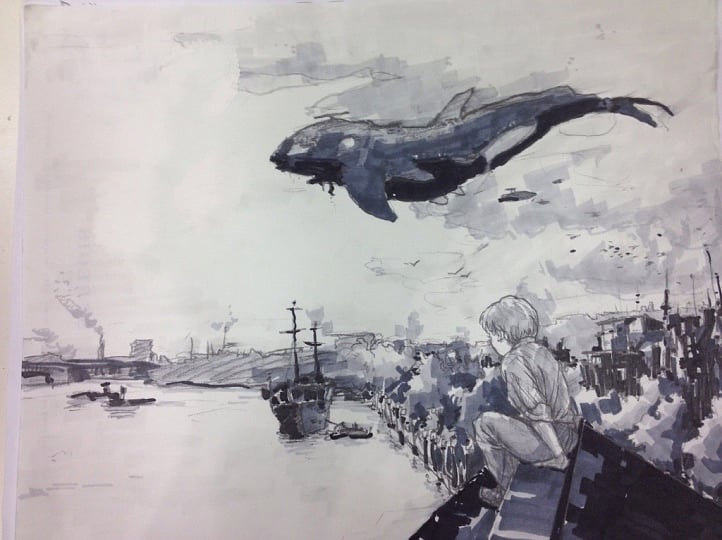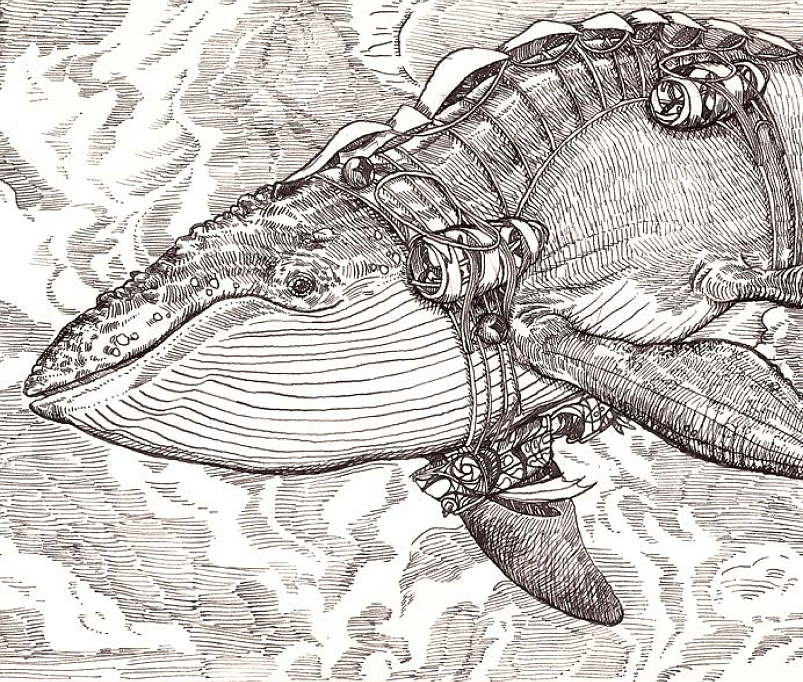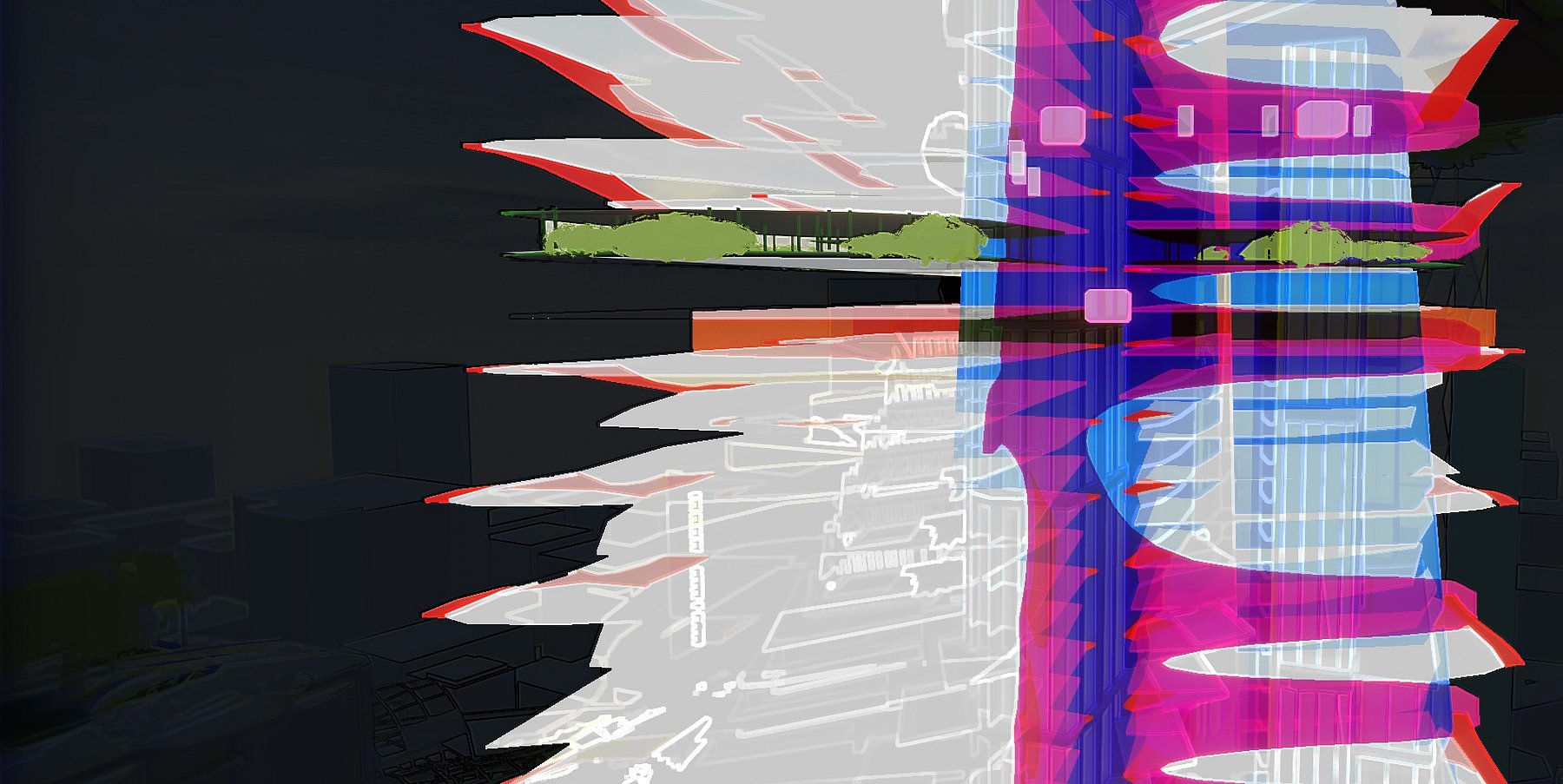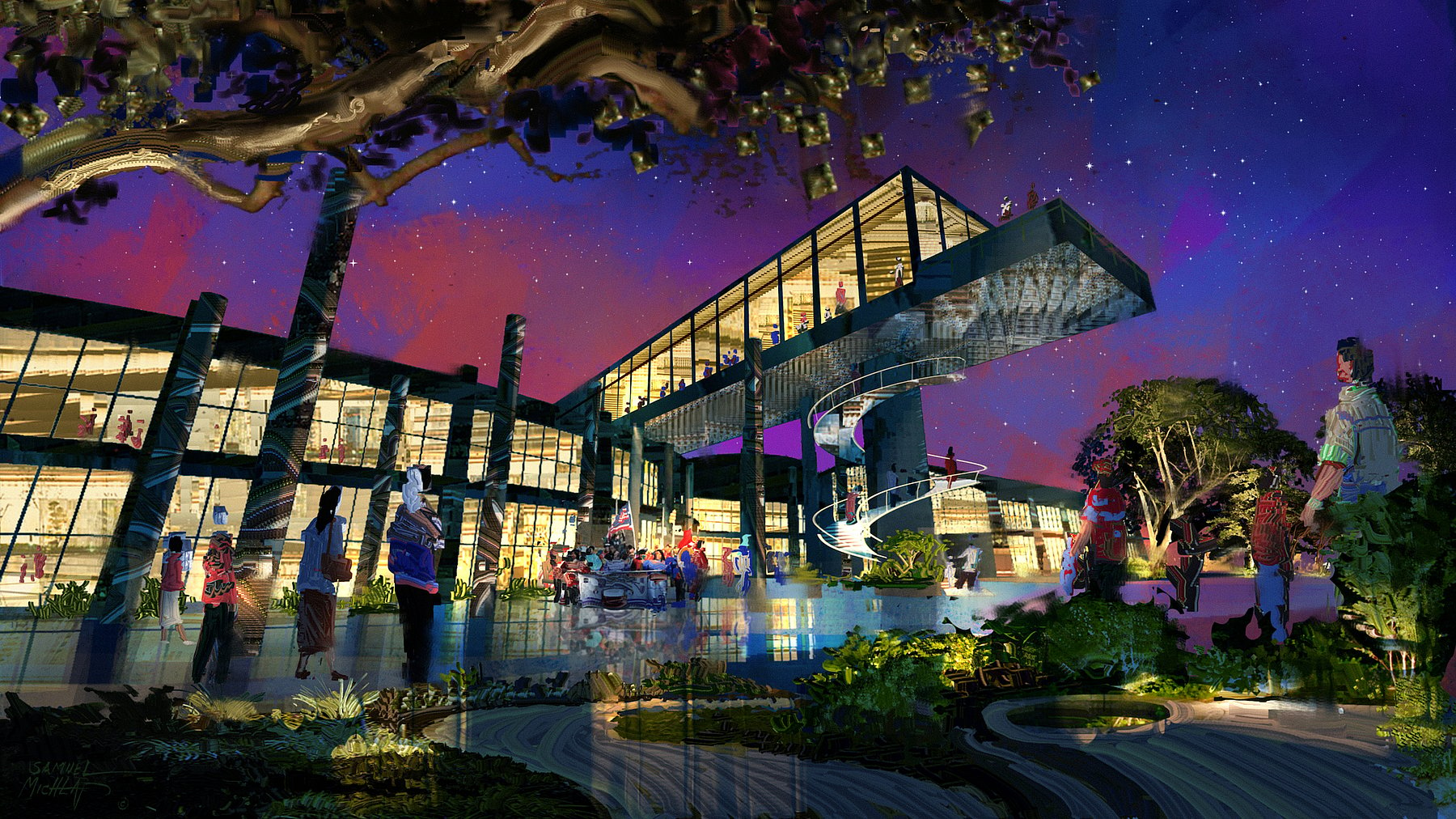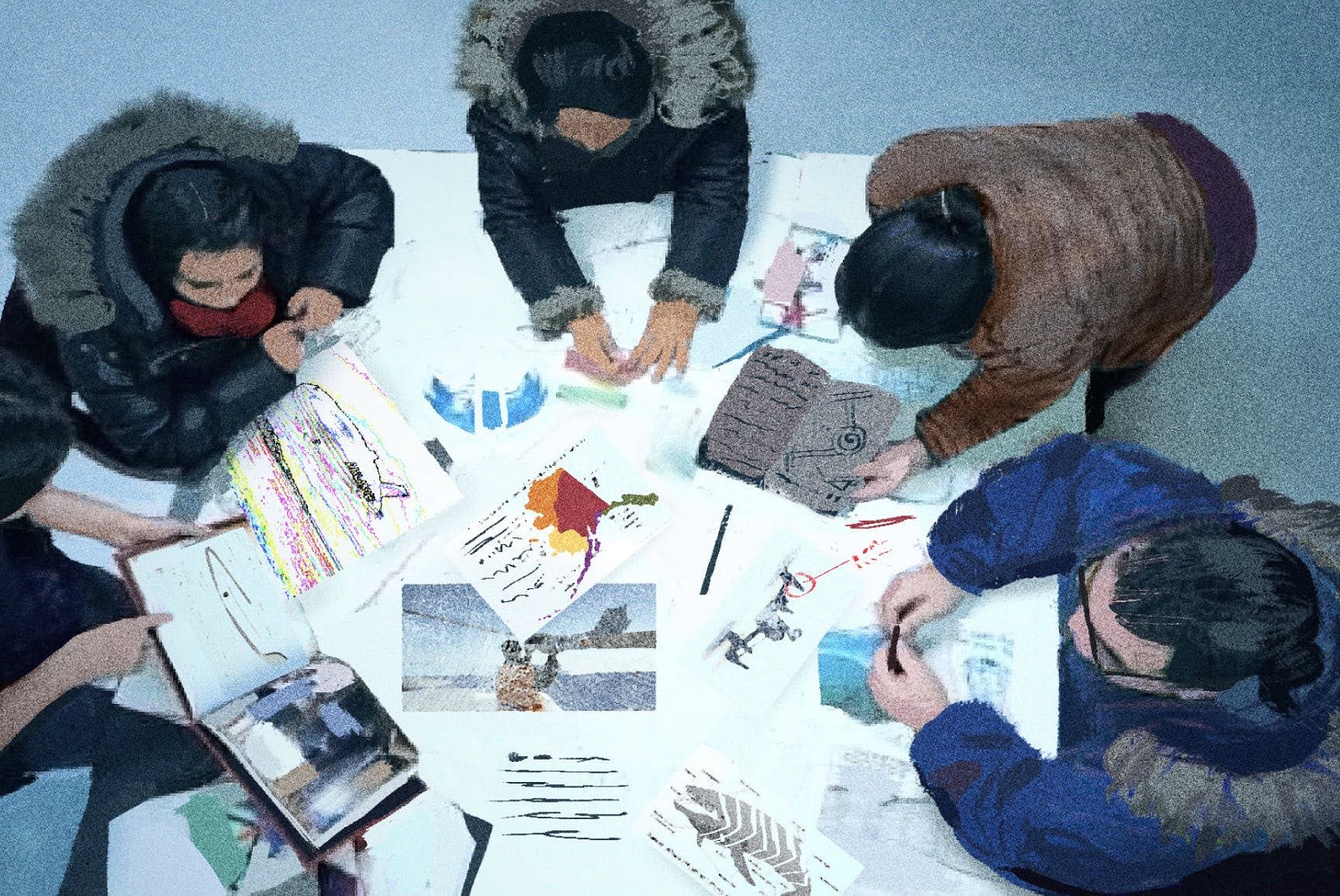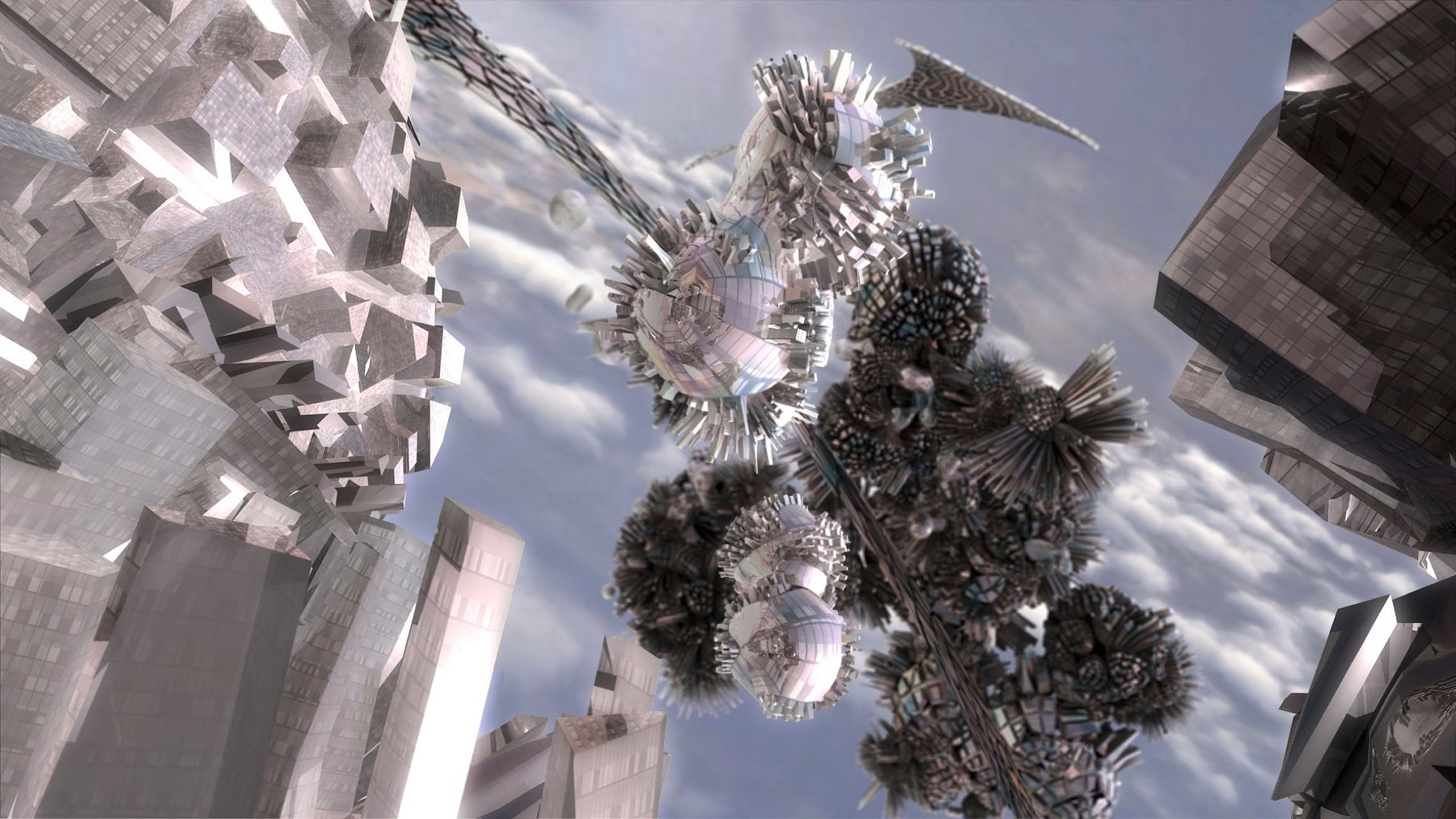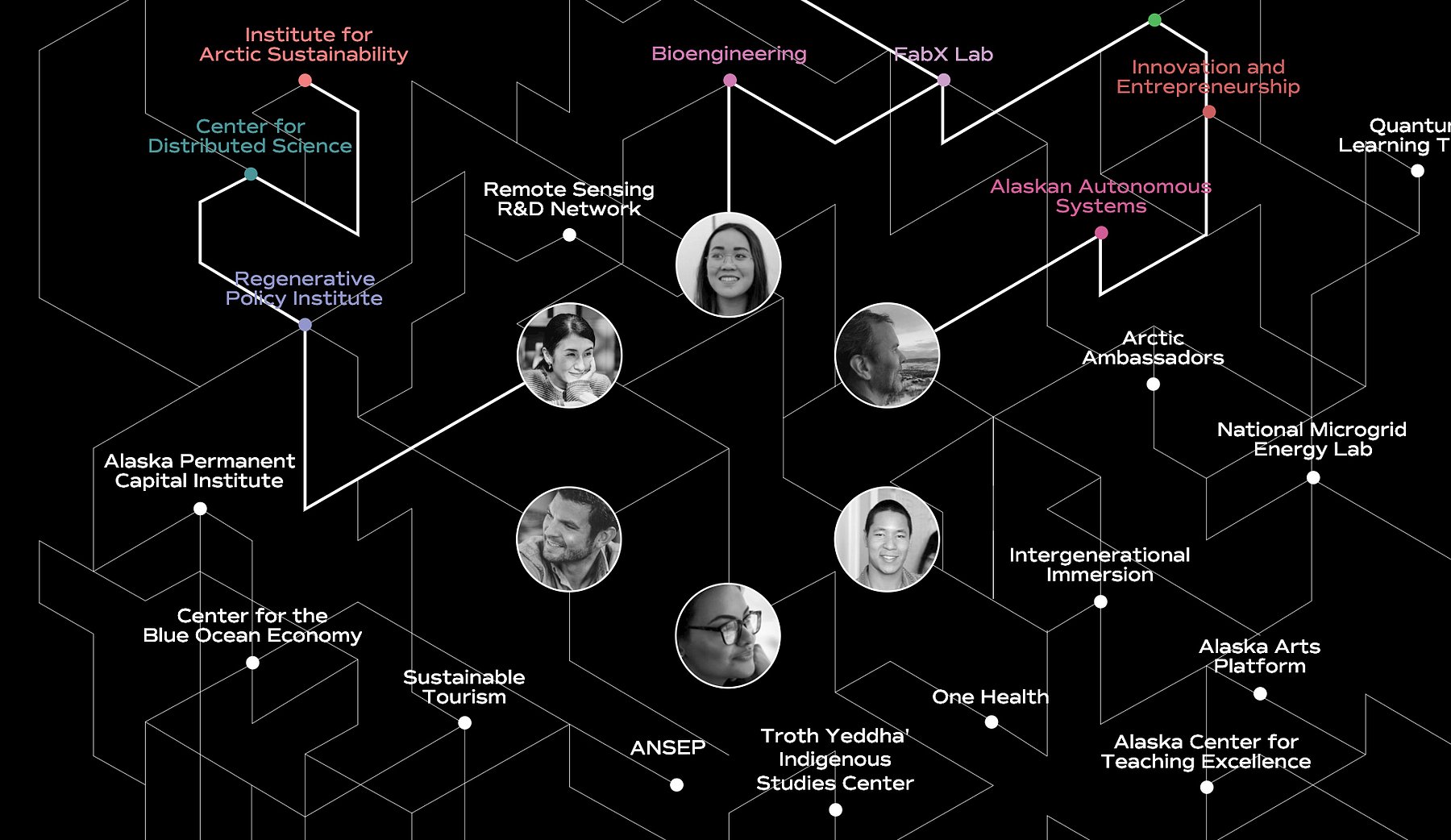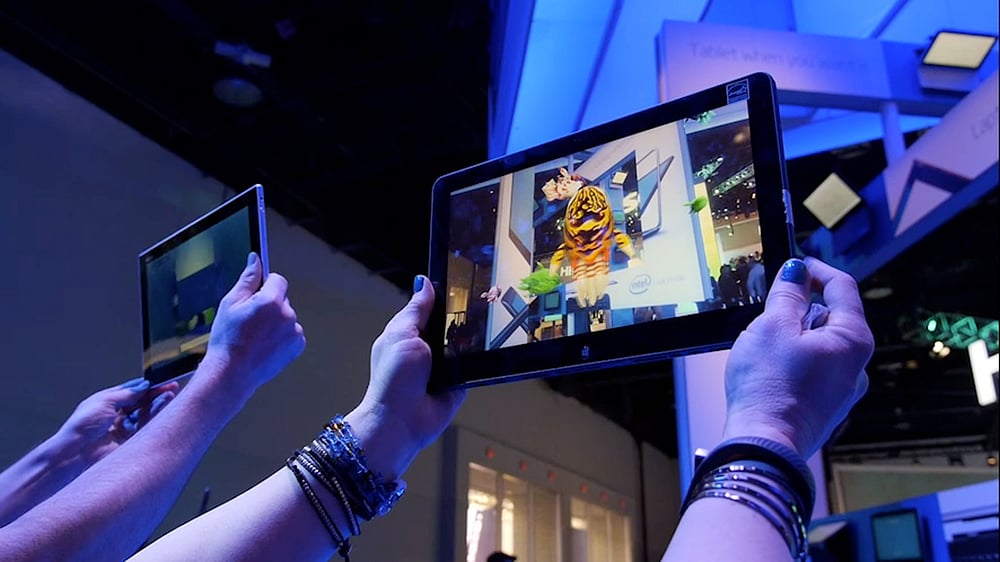
A new space for Storytelling
Leviathan
2012-2016
How do you develop a new storytelling language for emerging media?
“Break our chips.”
In 2012, Intel wants us to push their technology as far as it can go in a mixed reality exploration into the limits of immersive media narrative. Inspired by Scott Westerfeld’s Leviathan book trilogy, this 2-part, 4 year project begins with the design team asking “what if?” and “why not?”



VR headsets are motion-tracked and aligned with analog haptics, allowing users to touch objects in a virtual steampunk space.

Leviathan author Scott Westerfeld in an early prototype headset with Senior Research Associate Brad Newman inside the flying whale.
"...this is “future of entertainment” that people blather about. Not any specific technology,
like tablet-3D or VR helmets, but this cooperative, expansive world-building..."
Scott Westerfeld at the World Building Media Lab, Jan 2014
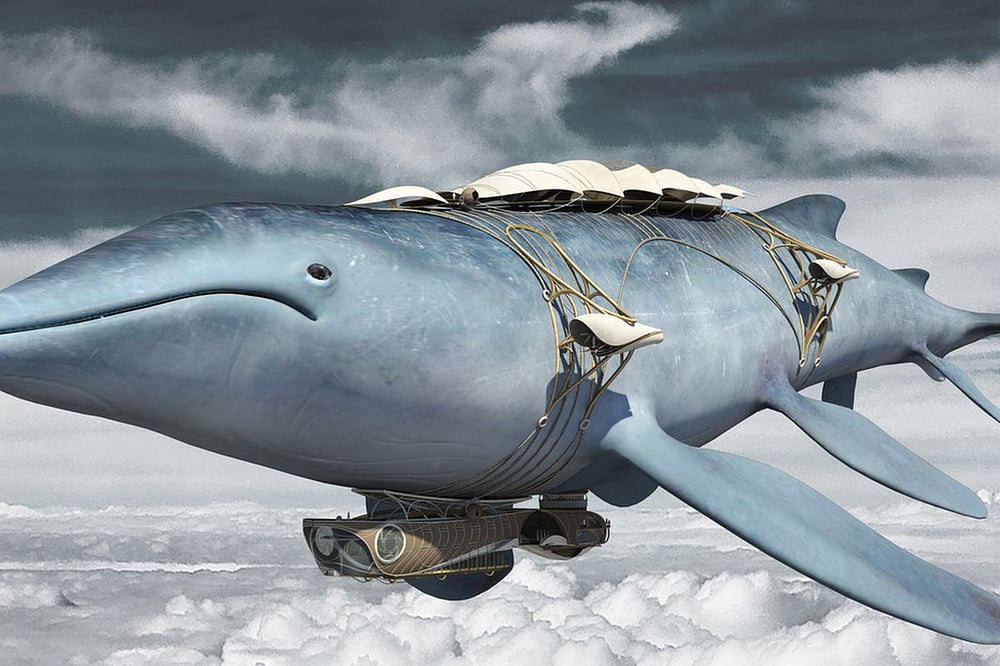
"We are entering a new space for storytelling," said Alex McDowell, professor of practice and director of the USC World Building Media Lab. "Not film, television, literature, theater, animation, or even interactive media. Leviathan weaves of them all into visionary tapestry of modalities. It inspires us to experience stories, with an unmatched level of freedom and perspective." CES, 2014
The ultimate experiment takes place in two real-world locations. At CES, a crowd of 5,000 looks up and interacts with our Leviathan — an animated, flying whale.
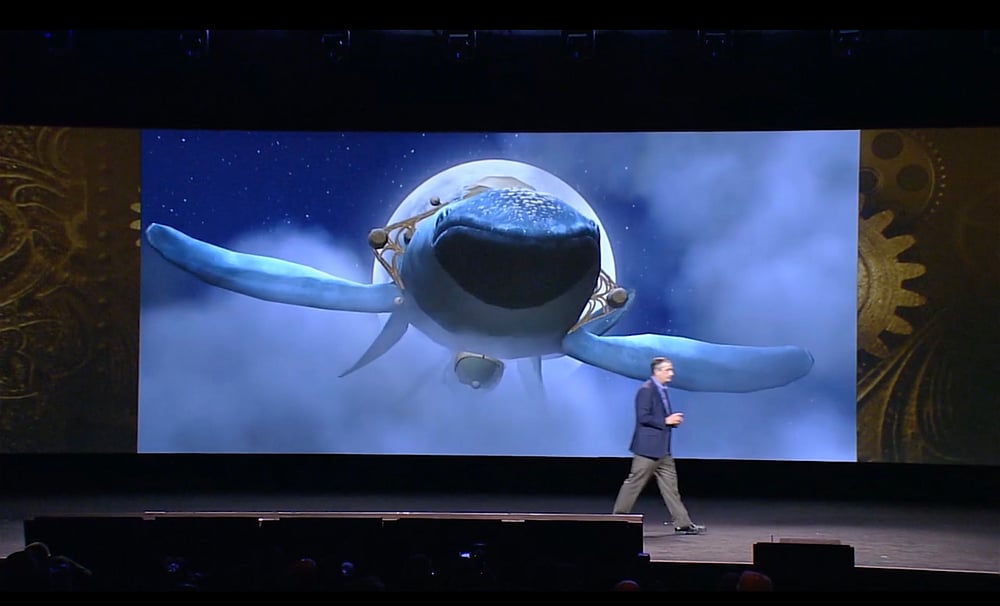
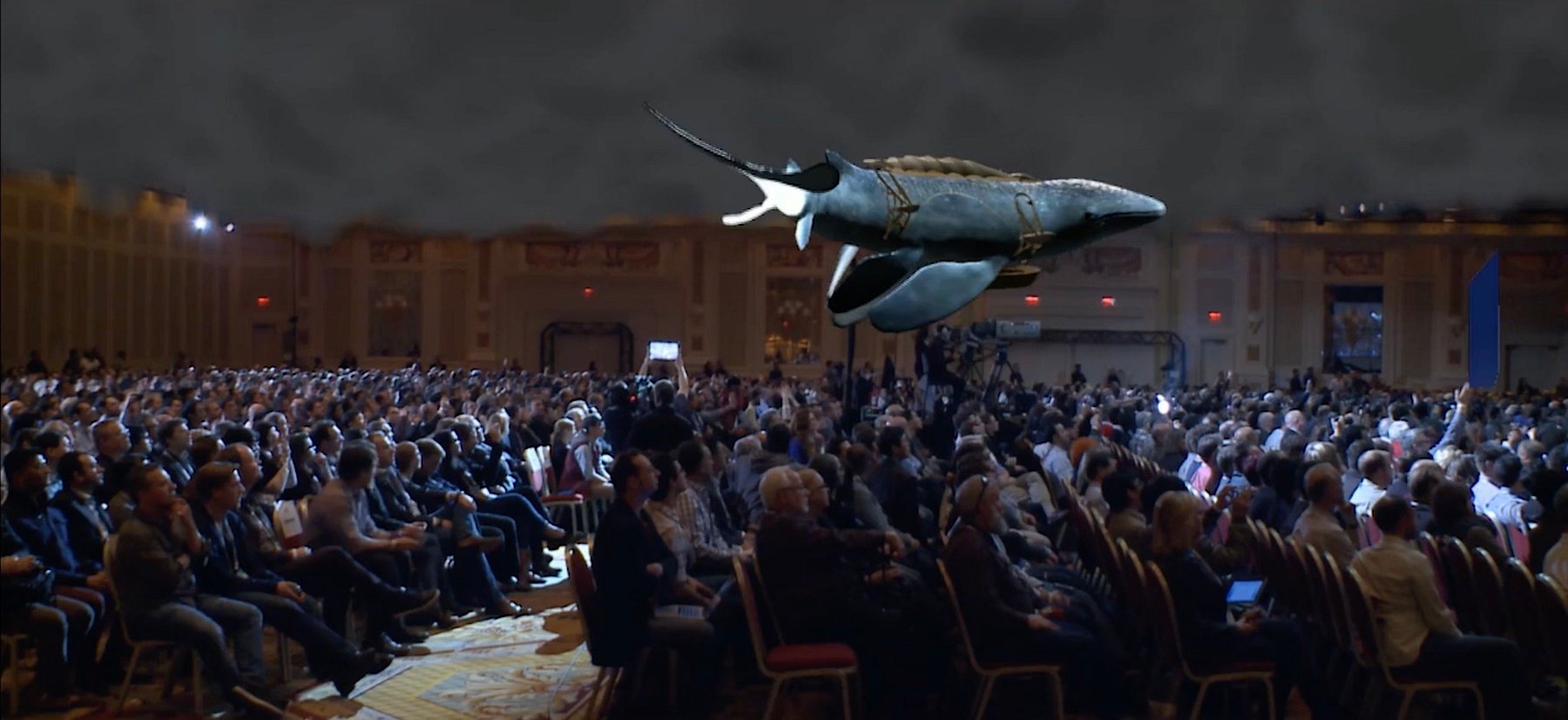

In 2012 the newly formed World Building Media Lab at University of Southern California partners with Intel’s Perceptual Computing Division to launch a funded-research project called Leviathan. Leviathan was a series of young adult books by Scott Westerfeld that portrayed a Darwinian steampunk world of genetically fabricated creatures like flying whales and floating octopuses.
The Phase One project brief challenges Intel’s new chips by creating virtual and augmented reality engagement to bring these creatures into direct interaction with the user.
In 2012 the Leviathan project is launched at CES in conjunction with Intel CEO Brian Matthew Krzanich’s keynote speech, when an 80' whale flies out of a projection screen and drifts over an audience of 5000, to loud applause. In other parts of the convention visitors interact with the octopus Huxley’s through tablet-based augmented reality.

Then, at the Sundance Film Festival, visitors pilot the whale through the skies of a fantasy environment.
Viewers enter the steampunk world of Leviathan and into a multi-dimensional story, inside the cockpit of the flying whale, populated by virtual characters, to craft their own genetically fabricated jellyfish, the Huxleys.
The narrative leads viewers from a journey on ‘rails’, to haptic interactions with tangible objects in virtual space, to untethered flight.


“The Leviathan Project.” There’s an involved backstory involving a steampunk novel and a flying whale. And the visuals have a colorful crispness one doesn’t find in all VR work. But the real hook of “Leviathan,” a first-person piece that has you conducting experiment on a spacecraft, is the way it integrates tactile physical tasks. Pull levers and pick up objects with your hands in the real world such that they match up with the more fantastical representations you’re controlling in the virtual one. Plenty of interactive VR experience allow controllers to trigger movement, but this is different: “Leviathan” creates a tactile experience that matches with your virtual one.
Steven Zeitchik, Los Angeles Times Jan. 30, 2016
Early Design Development

